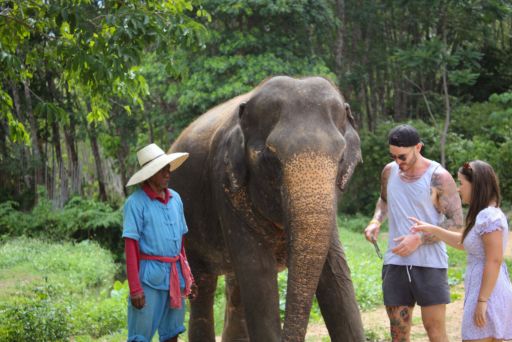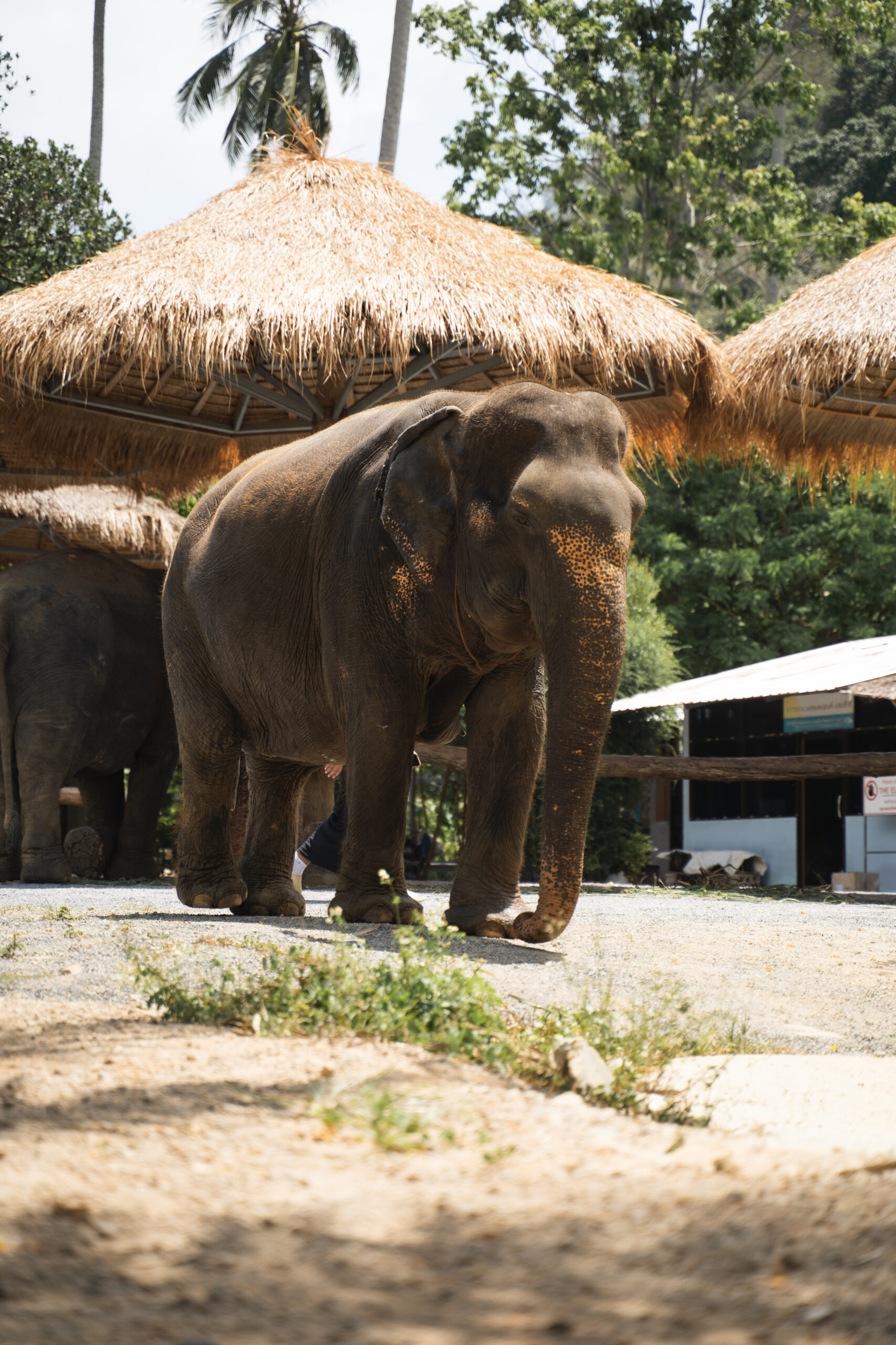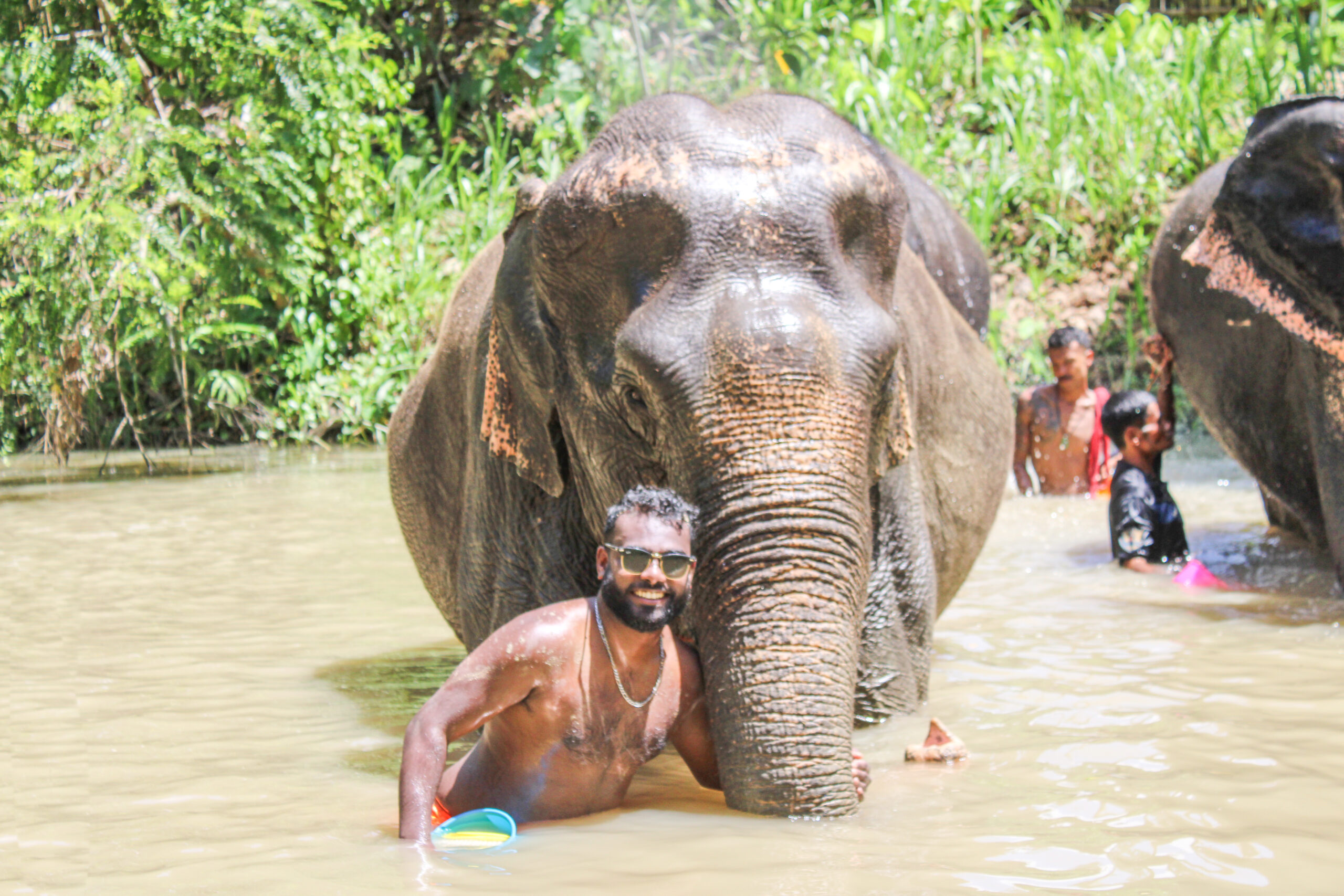
Elephants are magnificent creatures that play a crucial role in maintaining the balance of their ecosystems. However, they face numerous threats in the wild, including habitat loss, poaching, and human-wildlife conflicts. Providing elephants with a haven is of utmost importance to ensure their survival and the preservation of their habitats.
A haven provides elephants with a protected environment where they can roam freely and engage in their natural behaviors. It offers them a place to find ample food and water resources, socialize with other elephants, and raise their young without fear or disturbance. By establishing safe havens for elephants, we are not only safeguarding their future but also protecting the biodiversity and ecological integrity of the areas they inhabit. It is our responsibility to take action and create these havens to ensure that these majestic creatures continue to thrive for generations to come.
The History and Creation of the Natural Park Elephant
The Natural Park Elephant is not just a wildlife reserve; it is a testament to the dedicated efforts of conservationists and advocates for the protection of these majestic creatures. The history and creation of the park began decades ago, fueled by a desire to provide elephants with a haven where they could thrive. It all started with a small group of passionate individuals who recognized the urgent need to protect these gentle giants and their natural habitat.
This ambitious project began with extensive research and planning, as experts studied the behaviors and needs of elephants in the wild. A team of ecologists, biologists, and wildlife experts collaborated to design a sanctuary that would closely resemble elephants’ natural environment. They worked tirelessly to create a space where these magnificent creatures could roam freely, ensuring their physical and psychological well-being. Through years of dedication, the Natural Park Elephant was born, becoming a living testament to the incredible resilience and beauty of these remarkable animals.
A Glimpse into the Lives of Elephants in the Wild
Elephants, majestic creatures that roam the wild, are known for their close-knit social structures and fascinating behaviors. In the wild, elephants live in complex matriarchal societies led by the oldest and wisest female, known as the matriarch. These intelligent animals have remarkable memories and exhibit empathy and emotional bonds within their family groups.
Within their social structure, elephants communicate with a range of vocalizations, such as trumpeting and rumbling, as well as non-verbal cues like body posture and ear movements. They also rely heavily on their remarkable sense of smell and touch to navigate their surroundings and interact with others. In the wild, elephants spend a significant portion of their day foraging for food, which mainly consists of grass, leaves, bark, and fruit. Their large size and herbivorous diet require them to consume a substantial amount of vegetation to meet their nutritional needs. Elephants also require ample access to water, as they drink and bathe regularly to stay cool and maintain their overall well-being.
Conservation Efforts Protecting Elephants and Their Natural Habitat

Conservation efforts play a crucial role in protecting elephants and their natural habitat. Across the globe, organizations and governments are implementing various strategies to ensure the survival of these majestic creatures. One key aspect of these conservation initiatives is the preservation of elephant habitats. Deforestation, human encroachment, and illegal activities such as poaching have severely impacted the natural environments where elephants thrive. To counter this, protected areas and national parks have been established to provide a safe haven for elephants and other wildlife. These protected areas not only prevent further habitat loss but also help in maintaining the balance of ecosystems that elephants are a vital part of.
Additionally, anti-poaching measures are essential for safeguarding elephants from the illegal wildlife trade. Poaching remains a significant threat to elephant populations, driven by the demand for ivory. Various anti-poaching units, often comprised of local communities and law enforcement agencies, are actively engaged in the protection and monitoring of elephants. These units work tirelessly to patrol protected areas, apprehend poachers, and dismantle illegal wildlife trafficking networks. The increased enforcement and stricter penalties for poaching have certainly made a positive impact in some areas, but the battle against this illegal trade continues. Conservation organizations are dedicated to raising awareness about the devastating consequences of poaching and advocating for stronger measures to combat it.
The Unique Features of the Natural Park Elephant
The Natural Park Elephant is home to a diverse range of elephants with unique features that set them apart. One of the most distinctive characteristics of these incredible creatures is their large, magnificent tusks. These tusks are not only used for impressive displays of strength and dominance but also for essential tasks such as digging for water or stripping the bark off trees. Each tusk is a reflection of the individual elephant’s age and health, with older elephants boasting longer and more worn tusks. These tusks serve as a testament to the resilience and wisdom of these majestic animals.
Another remarkable feature of the Natural Park Elephant’s residents is their exceptional memory. Elephants have been known to remember individuals they have encountered, even years after their initial encounter. This incredible long-term memory plays a crucial role in their social interactions and helps them navigate complex relationships within their herds. Furthermore, their remarkable memory allows them to identify safe routes and water sources, ensuring the survival of their communities. This unique feature demonstrates the intelligence and adaptability of the elephants in the Natural Park Elephant, making them even more captivating and awe-inspiring.
Exploring the Diverse Flora and Fauna Coexisting with Elephants
Elephants are not just majestic creatures, but also important contributors to the diverse flora and fauna in their natural habitats. As these gentle giants roam through the landscape, they help shape the environment around them. Their massive size and powerful trunks enable them to uproot trees and clear away vegetation, creating open spaces that allow sunlight to reach the forest floor. This, in turn, promotes the growth of new plant species and provides opportunities for other animals to thrive.
One notable effect of elephants on the flora is their role in dispersing seeds. As they eat a wide variety of plants, they unknowingly carry seeds in their digestive system. When they later deposit their dung in different areas of the forest, these seeds have a chance to germinate and grow, aiding in the natural regeneration of the ecosystem. Additionally, elephants are constantly on the move, which means they spread seeds over vast distances, helping to maintain genetic diversity among plant populations.
The coexistence of elephants with other animals is equally fascinating. Due to their size and strength, elephants can create watering holes by digging into dry riverbeds or excavating large holes in the ground. These watering holes not only provide essential water sources for elephants but also become vital habitats for countless other species. Birds, insects, amphibians, and mammals gather around these oases, forming complex ecosystems where a variety of creatures depend on each other for survival.
In conclusion, the diverse flora and fauna found in the presence of elephants is a testament to their crucial role in maintaining the balance of ecosystems. Through their actions, elephants act as guardians of the natural world, shaping landscapes, dispersing seeds, and influencing the lives of countless other species. By understanding and appreciating their impact, we can better appreciate the intricate connectedness of the natural world and the importance of conserving these magnificent creatures and their habitats.
The Role of Tourism in Supporting Elephant Conservation
Tourism plays a crucial role in supporting elephant conservation efforts around the world. As people become more aware of the plight of these magnificent creatures, they seek out opportunities to engage with them responsibly and sustainably. By visiting elephant sanctuaries and natural parks, tourists not only contribute to the local economy but also help fund conservation projects.
One of the key benefits of tourism in supporting elephant conservation is the financial support it provides. Many elephant sanctuaries rely on the fees charged to tourists to fund their operations, including the care and maintenance of the elephants. These funds go towards providing proper medical attention, food, and shelter for the elephants, ensuring their well-being and protection. Additionally, the revenue generated from tourism activities can be allocated towards anti-poaching efforts and habitat restoration projects, further safeguarding the future of these majestic creatures.
• Tourism provides financial support for elephant sanctuaries and conservation projects.
• Fees charged to tourists contribute to the care and maintenance of elephants.
• Funds go towards medical attention, food, and shelter for elephants.
• Revenue from tourism activities can be used for anti-poaching efforts and habitat restoration.
Educational Programs and Initiatives for Visitors

Elephant conservation goes beyond just protecting these magnificent creatures in their natural habitats. It also involves raising awareness and educating visitors about the importance of their preservation. The Natural Park Elephant offers a range of educational programs and initiatives for visitors to learn more about these gentle giants.
One such program is the “Elephant Discovery Tour,” where visitors can join knowledgeable guides who provide fascinating insights into the behavior, biology, and conservation efforts of elephants. Participants get the chance to witness elephants in their natural habitat while being educated on the park’s initiatives to protect their future. Through this immersive experience, visitors gain a deeper understanding of the challenges faced by these animals and how they can contribute to their conservation.
In addition, the park offers interactive workshops and hands-on activities for visitors of all ages. These educational initiatives include opportunities to learn about elephant-friendly practices and ways to support their welfare. Through engaging presentations and workshops, visitors are empowered to make a positive difference in the lives of elephants, even after leaving the park. With these educational programs and initiatives, the Natural Park Elephant strives to create a platform for conservation education and inspire visitors to become advocates for the protection of elephants and their habitats.
Frequently Asked Questions
What are some educational programs available for visitors at the Natural Park Elephant?
The Natural Park Elephant offers a range of educational programs for visitors. These include guided tours, interactive exhibits, and informative talks by experts.
What can visitors learn about during these educational programs?
Visitors can learn about the importance of providing elephants with a safe haven, the history and creation of the Natural Park Elephant, the lives of elephants in the wild, conservation efforts, the unique features of elephants, and the diverse flora and fauna coexisting with them.
How do these educational programs help in supporting elephant conservation?
These programs raise awareness about the importance of elephant conservation and the role of tourism in supporting it. They also provide visitors with a deeper understanding of elephants and their natural habitat.
Are there any initiatives specifically focused on protecting elephants and their natural habitat?
Yes, the Natural Park Elephant has various initiatives in place to protect elephants and their natural habitat. These include habitat restoration projects, anti-poaching campaigns, and community outreach programs.
Can visitors actively participate in these conservation efforts?
Absolutely! The Natural Park Elephant encourages visitors to actively participate in conservation efforts. They can volunteer for various activities such as reforestation, wildlife monitoring, and community engagement programs.
Are there any age restrictions for participating in the educational programs?
The educational programs at the Natural Park Elephant are designed for visitors of all ages. There are specific programs tailored for children as well.
How long do the educational programs typically last?
The duration of the educational programs varies depending on the specific program. Some programs may last for a few hours, while others may span multiple days.
Can visitors expect to see elephants up close during these programs?
While the focus of these educational programs is on providing information and raising awareness, visitors may have opportunities to observe elephants from a safe distance in their natural habitat.
Are there any additional costs associated with participating in the educational programs?
Some of the educational programs may have a separate fee associated with them. However, the Natural Park Elephant strives to keep costs reasonable to ensure accessibility for all visitors.
Can visitors take photographs during the educational programs?
Yes, visitors are generally allowed to take photographs during the educational programs. However, there may be certain guidelines and restrictions in place to ensure the safety and well-being of the elephants.





